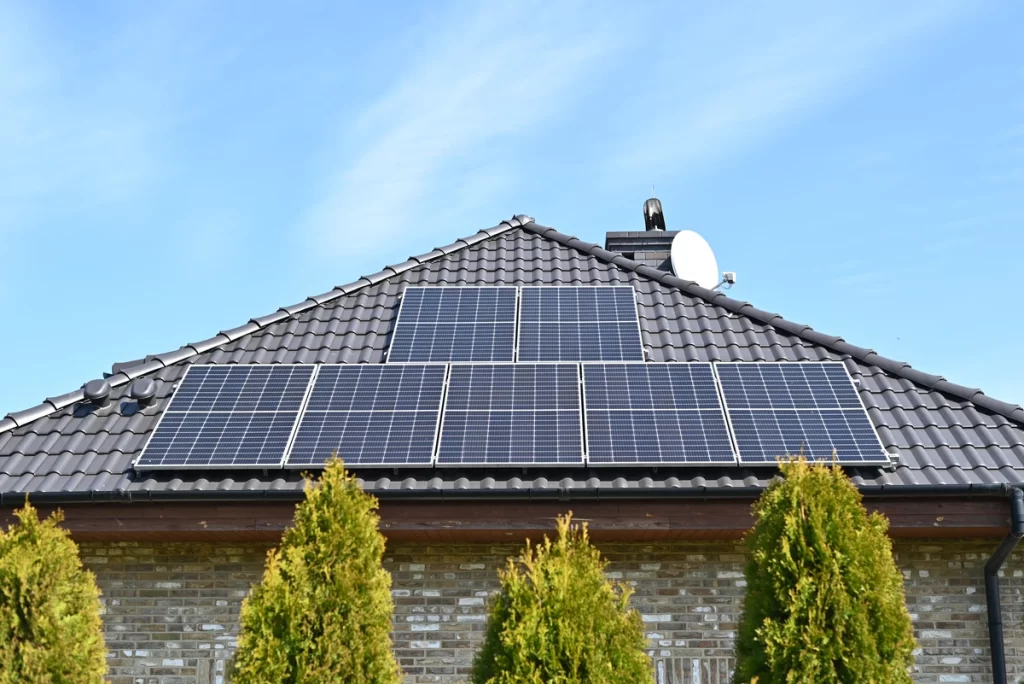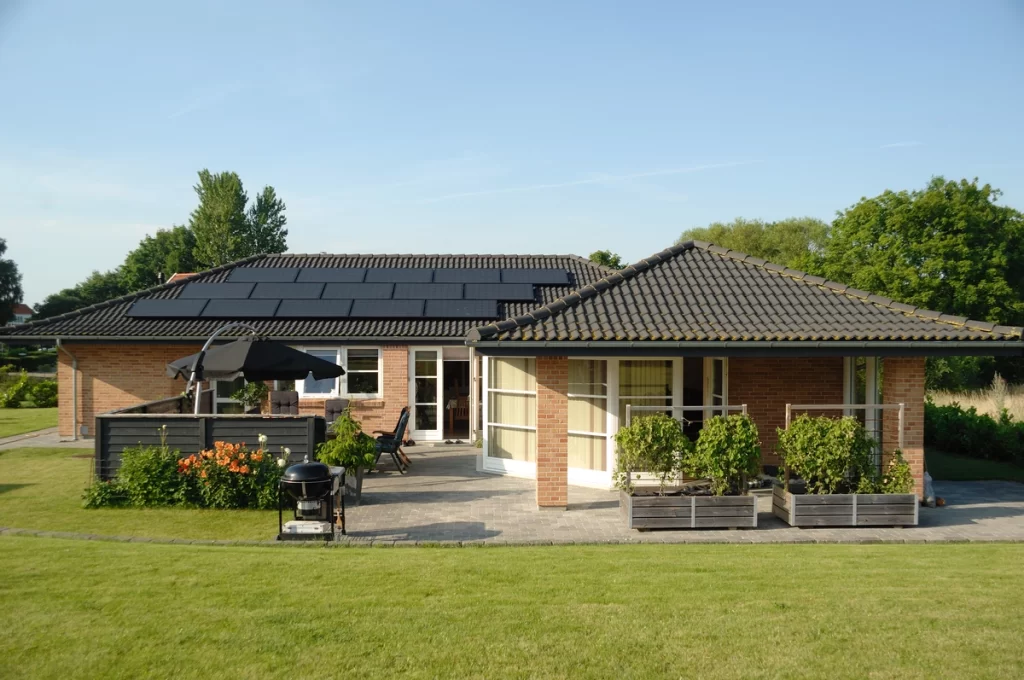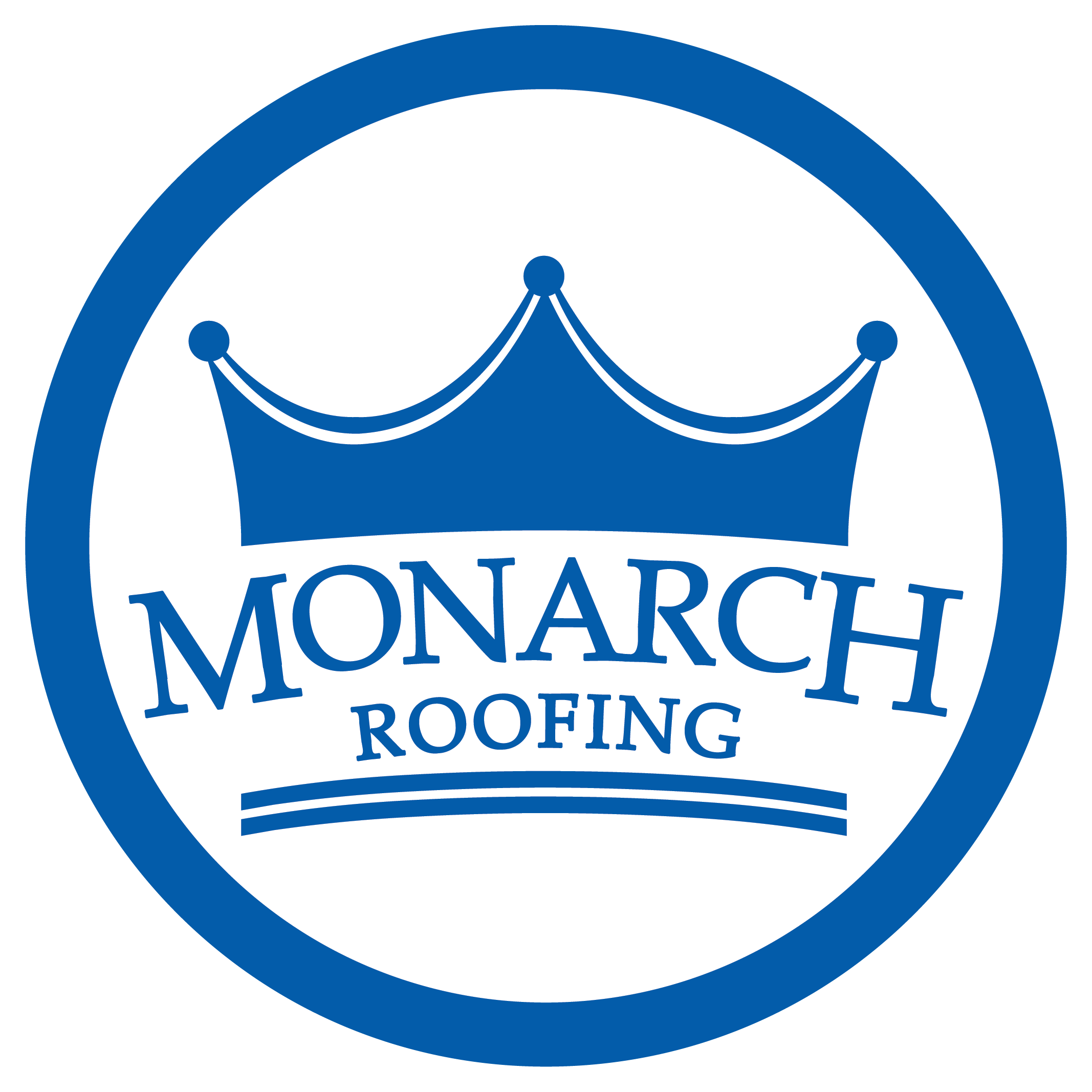In recent years, solar panels have emerged as a promising and sustainable energy solution for homeowners and businesses alike. As the world increasingly shifts towards renewable energy sources, solar panels have gained popularity due to their numerous benefits.
However, to harness the full potential of solar energy, it’s crucial to consider various factors, including the roof pitch. Today, we’ll explore:
- The pros and cons of solar panels
- What roof pitch is
- How to calculate it
- How to hire the right solar roofing company
- The best roof pitch for solar panels
Interested in solar roofing for your home and ready to find out the optimal solar panel angle for your home? Keep reading!
Pros and Cons of Solar Panels

Before delving into the specifics of roof pitch, let’s briefly discuss the advantages and disadvantages of solar panels:
👍 Pros of Solar Panels:
- Renewable Energy Source: Solar panels harness energy from the sun, which is an abundant and renewable resource, making them an eco-friendly choice.
- Reduced Electricity Bills: By generating your electricity, you can significantly lower your monthly utility bills or even eliminate them entirely.
- Environmental Benefits: Solar panels produce clean energy, reducing greenhouse gas emissions and combating climate change.
- Energy Independence: Solar panels provide homeowners with energy independence, reducing their reliance on traditional power grids.
- Increased Property Value: Homes with solar panels tend to have higher property values, making them a wise investment.
👎 Cons of Solar Panels:
- High Initial Cost: The upfront cost of purchasing and installing solar panels can be substantial, although government incentives and rebates can help offset this expense.
- Weather Dependency: Solar panels rely on sunlight, so their efficiency can be reduced on cloudy days or during the nighttime.
- Aesthetics: Some homeowners may find solar panels unattractive or believe they disrupt the visual appeal of their homes.
- Space Requirement: Solar panels require adequate roof space or ground area, which may not be available for everyone.
Understanding Roof Pitch
Roof pitch, also known as roof slope, is a critical factor to consider when planning to install solar panels. It refers to the angle or steepness of a roof, which can vary from nearly flat to very steep. Roof pitch is typically expressed as a ratio, such as 4:12 or 30°, where the first number represents the rise (vertical distance) and the second number represents the run (horizontal distance). For example, a 4:12 pitch means that for every 12 feet of horizontal distance, the roof rises 4 feet vertically.
How to Calculate Roof Pitch 📐
Calculating roof pitch is relatively straightforward and can be done using various methods. Here are two common methods to determine roof pitch:
Measure the Rise and Run:
- Measure the vertical distance (rise) from the roof’s highest point to its lowest point.
- Measure the horizontal distance (run) from the centerline of the roof to the edge.
- Divide the rise by the run to get the roof pitch ratio. For example, if the rise is 6 feet and the run is 12 feet, the roof pitch is 6:12.
Use a Roof Pitch Finder:
Roof pitch finders are readily available tools that help you determine the roof’s pitch quickly and accurately. They often have a level and a protractor to measure the angle directly.
The Best Roof Pitch for Solar Panels

Now that we understand roof pitch, let’s explore the ideal roof pitch for solar panels. The optimal roof pitch for solar panels depends on several factors, including your geographical location, energy needs, and personal preferences. However, there are some general guidelines to consider:
Latitude and Angle of Incidence:
The angle of your solar panels should ideally match your location’s latitude. For instance, if you live near the equator with a low latitude, a flat roof may work well. As you move away from the equator, a steeper roof pitch becomes more effective.
Latitude + 15°:
As a rule of thumb, adding 15 degrees to your latitude often provides a good starting point for determining the best roof pitch. For example, if you live at 30° latitude, a roof pitch of around 45° (30° + 15°) may be suitable.
Seasonal Adjustments:
If you want to optimize your solar panel system for seasonal changes, you can consider an adjustable mounting system. This allows you to tilt the panels at different angles throughout the year to capture more sunlight during the winter and less during the summer.
Aesthetics and Roof Structure:
Consider the aesthetics of your home and the structural integrity of your roof when choosing the pitch. Steeper pitches may be less noticeable but could require additional structural support.
Local Climate:
Your local climate, including the frequency of rain and snow, can affect your roof pitch choice. Steeper pitches shed snow more effectively, while flatter pitches may be suitable for areas with minimal snowfall.
Roof Orientation:
The orientation of your roof (north, south, east, west) can also influence the ideal roof pitch. South-facing roofs are typically the best for solar panels, but the pitch should still align with your latitude.
Get Advice on Your Solar Panel Installations
The best roof pitch for solar panels depends on a variety of factors, including your location, energy needs, and personal preferences. While there is no one-size-fits-all answer, considering your latitude, adding 15 degrees, and adjusting for seasonal changes can help you determine the optimal roof pitch for your solar panel system. Remember that it’s essential to consult with a professional solar installer to ensure that your chosen pitch will maximize energy production and provide the best return on your investment. And at Monarch Roofing, we have the expert opinion you’ve been looking for!
Contact us today for a quote on your solar panel installation!





